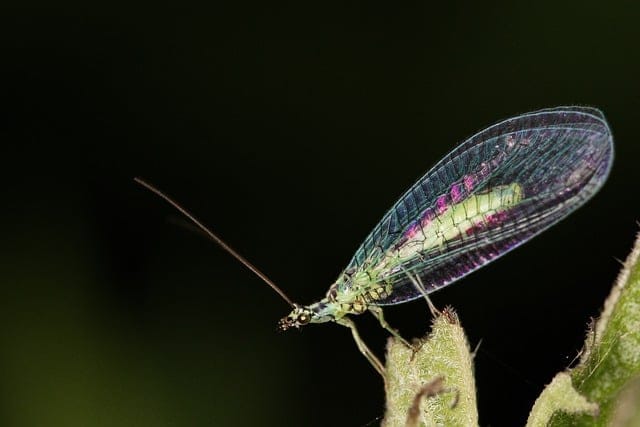Promoting pollinators: Lacewings
Explore the world of lacewings to understand their role in ecosystem stability

In this article:
- Introduction to Lacewings Pollinator
- Lacewings: An Overview
- Importance of Lacewings as Pollinators
- Lacewing Anatomy and Adaptations for Pollination
- Lacewings Pollination Behavior and Strategies
- Plants That Rely on Lacewings for Pollination
- Mutualistic Relationship: Lacewings and Flowers
- The Role of Lacewings in Ecosystem Stability
- Threats to Lacewing Pollination and Conservation Efforts
- Research and Scientific Studies on Lacewings as Pollinators
- Future Directions in Lacewing Pollinator Research
- Conclusion: The Vital Role of Lacewings in Pollination
Introduction to Lacewings Pollinator
When we think of pollinators, bees and butterflies often come to mind. However, an equally important group of pollinators that are often overlooked are lacewings. Lacewings belong to the insect order Neuroptera and are known for their delicate wings and beautiful appearance. In this article, we will explore the world of lacewings as pollinators and understand their role in ecosystem stability.
Lacewings: An Overview
Lacewings are insects that belong to the family Chrysopidae. They are found in various habitats worldwide, including gardens, forests, and meadows. There are over 1,000 species of lacewings, each with unique characteristics and adaptations.
Importance of Lacewings as Pollinators
Lacewings play a vital role in pollination, transferring pollen from the male to the female parts of flowers. This process is crucial for the reproduction of many plant species. While lacewings may not be as efficient as bees or butterflies in pollination, they contribute significantly to the diversity and abundance of flowering plants.
Lacewing Anatomy and Adaptations for Pollination
Lacewings possess several anatomical adaptations that aid them in pollination. Their long and slender mouthparts allow them to access nectar in narrow and deep flowers. Additionally, their hairy bodies trap pollen grains, facilitating their transfer between flowers.
Lacewings Pollination Behavior and Strategies
Lacewings have unique pollination behavior and strategies. They are known to be crepuscular or nocturnal pollinators, preferring to forage during the evening or early morning. This behavior allows them to avoid competition with diurnal pollinators and find nectar sources that are not accessible to other insects.
Plants That Rely on Lacewings for Pollination
Several plant species have evolved to rely specifically on lacewings for their pollination. Examples include certain orchids, night-blooming flowers, and plants with long tubular flowers. These plants have co-evolved with lacewings, developing specialized floral structures that attract and accommodate these unique pollinators.
Mutualistic Relationship: Lacewings and Flowers
Lacewings and flowers share a mutualistic relationship. Flowers provide lacewings with a source of food in the form of nectar, while lacewings assist in the pollination process. This relationship showcases the intricate interdependence between plants and insects in maintaining ecosystem balance.
The Role of Lacewings in Ecosystem Stability
Lacewings, along with other pollinators, contribute to the stability and functioning of ecosystems. By facilitating sexual reproduction in plants, they promote genetic diversity, which is essential for the survival and adaptation of plant species in changing environmental conditions. Additionally, lacewings contribute to the production of fruits and seeds, which sustains the food web and provides nourishment to various animals.
Threats to Lacewing Pollination and Conservation Efforts
Despite their importance, lacewings and other pollinators face numerous threats that compromise their populations. Habitat loss, pesticide use, climate change, and invasive species all pose significant challenges to lacewings. Conservation efforts are crucial to protect and promote lacewing populations, including creating pollinator-friendly habitats, reducing pesticide use, and increasing public awareness.
Research and Scientific Studies on Lacewings as Pollinators
Scientific research on lacewings as pollinators has provided valuable insights into their behavior, preferences, and the plants they interact with. Studies have also explored the role of lacewings in various ecosystems and their potential as bioindicators. This research helps guide conservation efforts and inform land management practices.
Future Directions in Lacewing Pollinator Research
Future research on lacewings as pollinators should focus on understanding their response to changing environmental conditions and identifying key factors that affect their population dynamics. Additionally, further studies are needed to explore the potential of lacewings as agricultural pollinators and the effectiveness of conservation strategies in protecting these important insects.
Conclusion: The Vital Role of Lacewings in Pollination
Lacewings, with their delicate beauty and fascinating adaptations, are important pollinators in diverse ecosystems. Their role in transferring pollen between flowers contributes to plant reproduction, genetic diversity, and the stability of ecosystems. By promoting lacewing populations and protecting their habitats, we can ensure the continuity of their valuable pollination services.
